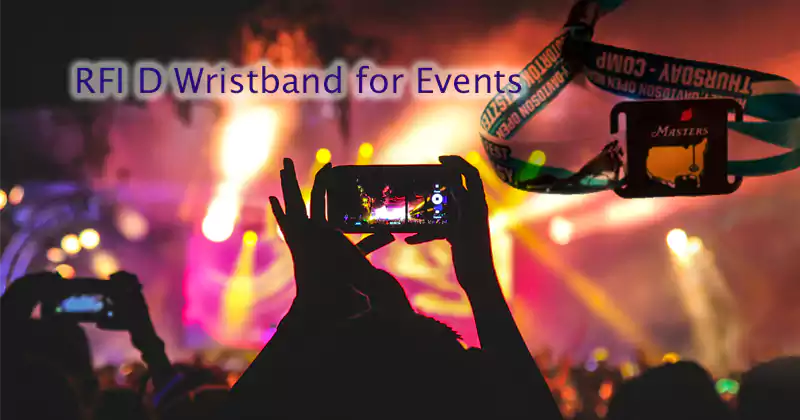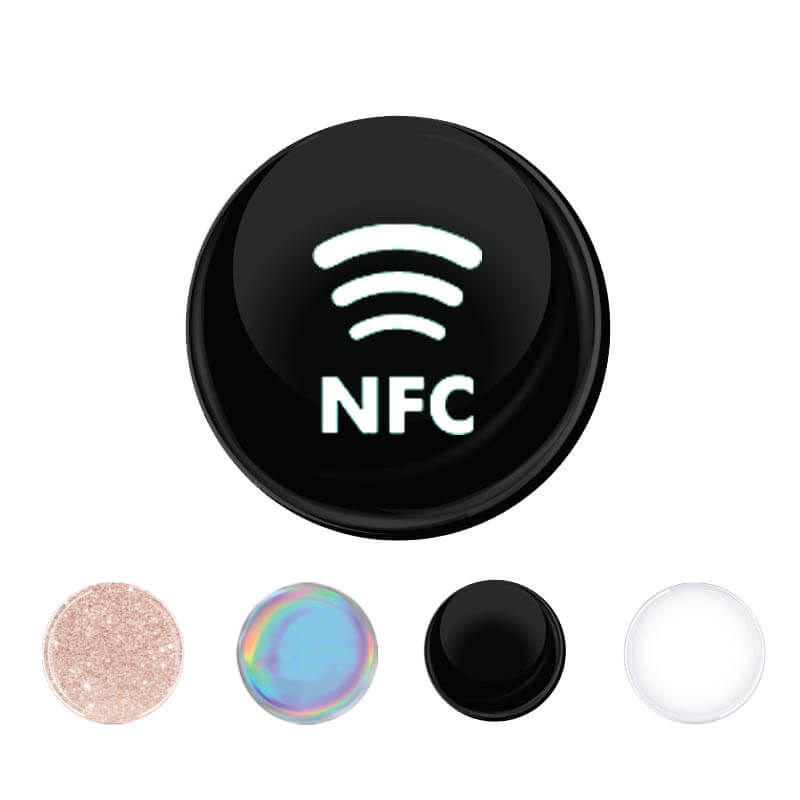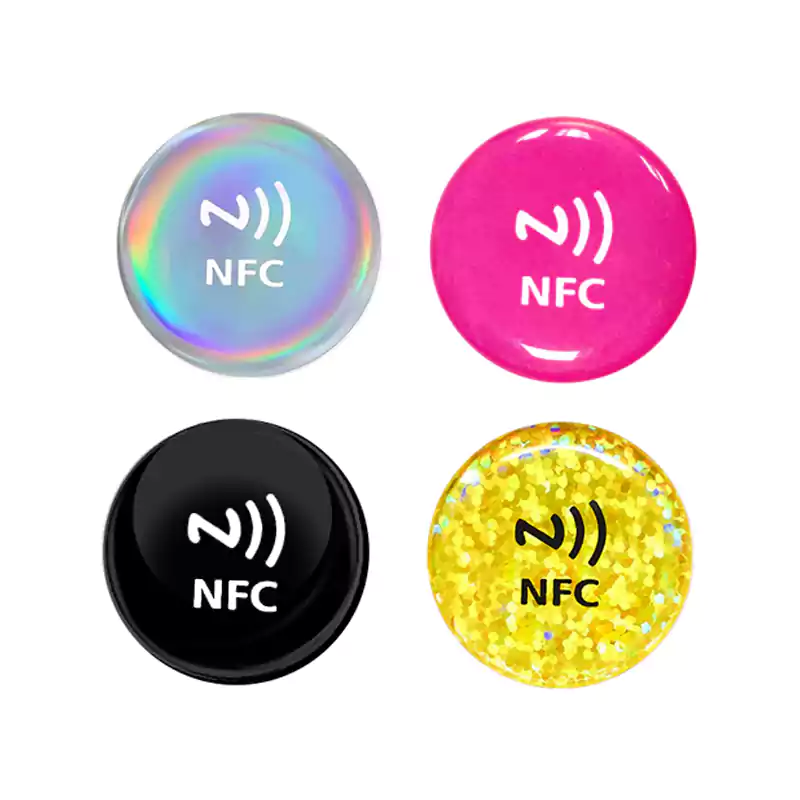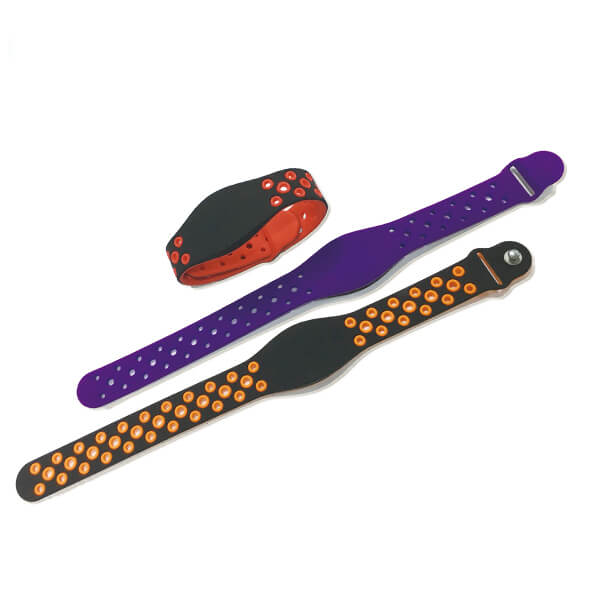Have you ever attended arts or music festivals where you were asked to wear a fancy wristband on your wrist? You might not have given attention to the level of importance attached to this wristband. However, it would interest you to know that a small device serves quintessential importance when it is used.
It is crucial to mention that there is a replica of RFID wristbands, which are referred to as silicone bands. They look so similar, but they are different from each other. After reading this guide, it would be easy for you to differentiate RFID wristbands from silicone bands.
What is the actual definition of Radio Frequency Identification?
Radio Frequency Identification is the long-form of RFID, and it is a technology that employs the use of radio waves to identify objects or people. The device reads the information in a tag or wireless device from a good distance. And it does not need to make physical contact before it interprets the information in the tag.
The RFID technology uses scanners to receive the data embedded in the RFID tag, and it sends it to the computer system’s backend without the inclusion of physical contact.
RFID technology is commonly used to monitor inventory, but it does not need a direct sightline for proper reading. More so, the data in the RFID tag can either be modified or updated instantly. And lastly, Passive RFID tags can operate normally without power supply.
How do RFID wristbands work?
During most big events, RFID wristbands are mandatory for anyone who intends to enter the event’s center. If you have attended a big event before, there is a big chance that an RFID wristband has been slipped on your wrist.
RFID wristbands come with tiny chips. These chips are scanned with either wristband readers or smartphones. Usually, these wristbands are guests’ ticket for entry, and it collects their data that would be useful to the organizers when future events will be organized.
RFID wristbands work based on the principle of transmission of the exclusive wristband’s identity with radio waves. The RFID technology allows the scanner to receive the data in the RFID tag and sends it to the computer system’s backend area.
When it is tapped, the RFID scanner transmits the encoded radio signal that spotlights a tag. Within half a millisecond, the wristband receives the transmission and reverts with a special identification number.
The communication between the reader and the wristbands do not need a physical connection. However, there are range limits that depend on the frequency that the system functions at.
With the Low-frequency system, few RFID wristbands can be read instantly because of the short-range and low storage memory capacity. The High-frequency system has a better range than the low frequency, alongside bigger storage capacity and faster data transfer speed.
While the Ultra-High frequency system comes with high transfer rates of data and long ranges, you can use any of the frequency options depending on the type of festival or event you are organizing.
What happens when an RFID wristband is scanned?
The moment an RFID wristband is tapped, the RFID scanner transmits a radio signal that is encoded, and it immediately identifies the tag. The RFID tags get the transmission quickly, and a distinct identification number is generated.
A relatable incident when an RFID wristband is scanned is when the barcode on the soda can is scanned. When it is scanned, the barcode relates to the information database peculiar to the soda. The important details like price, name of the product, weight, and the expiry period are unlocked as the barcode is read.
Are RFID wristbands the same as barcode wristbands?
Several people make the mistake of mistaking RFID wristbands and barcode wristbands for each other. Even though they use the same principle of data retrieval through scanning, that is where their similarities end.
RFID vs. Barcode Wristbands Comparison table:
| RFID WRISTBAND | BARCODE WRISTBAND | |
|---|---|---|
| Read Rate | The throughput is high. And several tags can be read within a short time, which makes it superb for program admissions. | The throughput is low. The codes can be read one at a time. |
| Line of sight | No line of sight is needed. If the RFID tag is within reading distance, there is no need for orientation | A line of sight is needed for a barcode wristband. |
| Resource | The resource is low, and the RFID can be activated through an integrated gate or portal where attendees just tap their bands to gain entry to a program. | The resource is high. And it needs human influence to facilitate precise scanning. |
| Write/Read Capability | It can write, read, and modify instantaneously. | It can only read |
| Durability | The durability is high. RFID antennas can be fixed into several non-conductive items to safeguard against heat, water, and other factors | It is not durable. The barcodes get damaged when the weather conditions are unfavorable. |
| Security | The security is high because it is almost impossible to copy RFID tags. There is encryption that comes with a password. | It comes with low security, and it can be easily copied and reproduced. |
Constituents of an RFID Wristband
You will find a smart tag inside an RFID wristband, and this tag comprises an antenna and an RFID chip. The tag could bear a similarity to a visible card, which is plastic-like for durability. Also, the tag could be hidden in typical wristband assortments like cloth and silicone.
Three types of tags can be used: Active, Passive and Battery-enabled
Active tags: Active tags come with an in-built battery that regularly sends information without a reader’s need.
Passive tags: These tags use the energy churned out by the reader to generate power. And they do not have in-built batteries like active tags. Passive tags are commonly used at the venues of big events.
Battery-enabled tags: These RFID tags come with batteries that impact power to the tag when it is within the range of the reader.
How much Data can an RFID Wristband store?
It would interest you to know that an RFID wristband size does not determine the amount of data it can store. You can store data like access control codes for guests’ rooms and hotels, credentials, coupons, details of products, social media data, and a host of others. For the categories of information listed, much Data is not needed to contain them.
When you get to a checkpoint, and you wear an RFID wristband, you have the option of choosing if you want your social media activity to be posted on your social media platforms or not.
The most gigantic RFID tags (Passive) can hold up to 4 kb of information. And this would suffice in storing personal details like address, name and the likes. If you are using UHF tags, you can keep 8kb of information.
Access control systems use RFID tags that can store up to 4kb of information or less.
How much is the cost of an RFID Wristband
RFID wristbands are not expensive, and the cost depends on the volume of wristbands you are getting. Also, the cost of an RFID wristband depends on its quality. Usually, the cost of an RFID wristband begins from 0.10 cents for one piece. It is challenging to give precise information on the pricing of an RFID wristband since several factors are involved.
Some reusable RFID wristbands could go for $10, and it could be lower than that. If you will be buying RFID wristbands in bulk, there is a possibility that there would be discounts.
Also, an RFID wristband cost depends on if you will be using passive HF wristbands or passive UHF wristbands.
What Data can an RFID Wristband collect?
The technology behind RFID wristband is a valuable resource to organizers of events. With the RFID wristband, organizers have the luxury of thoroughly monitoring the analytics of the entire event. The organizers can know how many guests came for the event and how they interacted with the event’s details.
What’s more, the RFID wristband can help monitor busy times, famous attractions, and the likes. Smart organizers usually use the RFID wristband to create a surreal and memorable experience for guests and visitors.
How to program an RFID wristband
An RFID tag has a peculiar ID and other important data. As stated earlier, there are active and passive tags. Generally, the passive tag comes with an antenna, which is a coil of wire. When the antenna is placed close to a reader, it produces a minuscule charge sufficient to make the tag send its special ID.
Since this charge is minuscule, the passive tag must be placed close to the reader to work.
The particular ID is what makes it possible to use the RFID. Also, it is useful in differentiating one tag from the other. If you want to track inventory, place the tag on the product, and allot an ID to the item. By this, you can give unique keys to several things.
With this principle, a credit card tag can function as a membership card. All you need to do is create another field within the membership database for the Tag identification. Then, scan the card and allot a tag ID to the member in the membership database before giving the card to the member.
Can RFID wristbands be used as a tracking device?
The notion of RFID wristbands being used as a tracking device is not valid. A good number of RFID wristbands are built with passive tags that function at a high frequency. Hence, it is not possible to monitor and track the location of the wearer. And the reason for this is because these tags can only work within short distances.
Although RFID wristbands are great in recording the last location of an individual, this feature comes in handy to track the flow of traffic and security when future events are underway.
Transform every aspect of your occasion, hotel, or attraction
In addition to the fact that RFID technology is quintessential in the streamlining of guests’ entry, it takes your audience to a new, improved level. Your guests no longer have to move about with tickets, wallets, and the likes when they are coming to your event or hotel. It is a relief for regular ticket holders, as they can focus better on the event with an aura of freedom.
Event organizers need to take advantage of this innovation to create seamless and memorable events for people coming to their programs.
The benefits of RFID Technology for Events
At top festivals and events, there is a considerable chance that you will see people wearing RFID wristbands. The benefits of RFID, for the occasion, are immense, and they are beneficial to both the organizers and attendees. Besides, the attendees can decide to connect their social media handles and emails with their wristbands before the event.
- Quick admittance
With RFID wristbands, long queues at big events can be avoided. Guests do not have to fumble through their personal effects for their tickets. Instead, all they need to do is get their RFID wristbands scanned at the event’s venue, and they are good to go.
The use of RFID wristbands also reduces the number of personnel who attend to guests when they arrive. This technology comes in handy by taking the burden of individuals who go through the rigorous stress of checking guests.
- Organize better events with instantaneous insights
With RFID wristbands, you will receive real-time insights into the traffic flow of your event. If your event is more than one day, it would be easy to monitor the status and the influx and exit of guests. With these insights, you will be able to plan for extra seats, additional parking spaces, surplus refreshments, and the likes.
- Fraud reduction
If you want to eliminate fraud while planning your event, RFID wristbands come in handy. The beauty of RFID wristbands is, they come with RFID chips that have a special feature that makes it almost fruitless to duplicate. This means that the regular duplication of tickets is now an extinct feature.
- Cashless operation
When your guests come for your event, it would be a big relief if they don’t have to join long ATM queues before getting cash. With their RFID wristbands, your guests can pay for drinks, food, and other merchandise by just tapping their band.
To make things easier, they can include their payment data to their RFID wristbands sometimes before the event. And this is effortless for them when they want to buy. Hence, your guests can worry less about fraud because they don’t have cash on them.
- Better relationships with sponsors
With RFID wristbands, it is easier for sponsors to interact with their attendees by creating fun experiences to keep them engaged. Interestingly, attendees can take part in polls, competitions, and promotional offers. And all they need do is tap their wrist or use their badge.
This makes it seamless for sponsors to amass information without being a nuisance. Also, sponsors will use this opportunity to monitor the traffic to their event.
- Better VIP Experience
For most events or occasions, there are VIPs to who the organizers or sponsors need to pay special attention to. One way to create a better experience for your VIPs is to use the RFID wristbands to monitor their activities.
For instance, if any of your VIPs need to get something done or have a complaint, they can easily reach out to the organizers using their RFID wristbands. With this, you will have happier attendees who will look forward to attending your event again.
- Overwhelm your guests
If you want to impress your guests by portraying your event as cool, having RFID tags around is one of the best ways to do it. This excitement builds up within your guests when they get their wristband and place it on their wrist. It would interest you to know that several guests would prefer to keep their RFID tags after the events. And one of the reasons for this is because they love to relive the experience again.
You can exploit this knowledge by making your RFID tags more fanciful that attendees would love to hold on to them for a long time.
- Know your audience better
In times past and even till now, when guests buy tickets en masse or register for an occasion as a group, you are limited to the ticket’s information. This discourages you from knowing your attendees on an individual basis.
This is different from RFID wristbands, as all individuals must wear their wristbands. And this also applies if someone purchases a ticket on their behalf. When your attendees register their wristbands, they fill in important info like their email addresses, which would be useful for subsequent marketing occasions.
In addition to the insights that organizers gather from the data collected with the RFID wristbands, it is easier for organizers to improve each year’s event.
Related articles:
- RFID Access Control Bracelets
- RFID Wristbands for Marketing
- RFID wristbands for Spa
- The Reason Why Everyone Love NFC Wristband
- RFID Wristband For GYM
- Real-Time Temperature Monitoring System-Smart Battle Covid-19,Escort for your safety
- LF, HF, and UHF Frequency: What’s the Difference?
- Maintaining hand hygiene with a hand sanitizer bracelet
- 6 Ways RFID wristbands for theme parks











